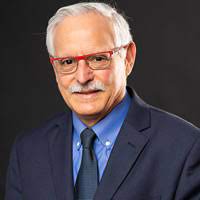Douglas Seefeldt is digital historian with teaching and research interests that focus on the intersections of history and memory in the American West. He arrived at Clemson University in the fall of 2020 after spending eight years in the Department of History at Ball State University in Muncie, Indiana, where he was founding Research Director of the Digital Scholarship Lab from the fall of 2016 through the spring of 2020, a 2014-15 Fellow at the Charles Warren Center for Studies in American History at Harvard University where he participated in the Workshop on Multimedia History and Literature: New Directions in Scholarly Design, and an Emerging Media Fellow with the BSU Center for Media Design from 2012-14.
Category: Research Fellows
This is the sub-category for Research Fellows posts. Any posts within this sub-category will be displayed under the Research Fellows header on the People page.
Jeff Berg

Jeff Berg is a user experience expert at IBM Interactive. Jeff has more than 10 years of social computing development experience with expertise in rich internet application programming, community strategy, usability, user experience, 2d design, 3d content creation, and emerging technology adoption. Jeff focuses on community relations projects which use internet technologies to augment museum and cultural spaces. His interaction development experience includes MoMA New York, The Egyptian Museum in Cairo, The Palace Museum Beijing (The Forbidden City), The Smithsonian National Museum Of African American History and Culture and more.
Jeff has leveraged his rich interaction design experience on commercial projects which include Zula Patrol (the children’s television show), Circuit City, Aviva, Blue Cross Blue Shield, Epcot, Volvo, LL Bean, Steelcase and PNC Bank.
As a consultant Jeff has built interface prototypes and design concepts for McDonalds, Mazda, Coca Cola, American Signature, Discover, Exelon, Sears and more.
Jeff collaborated as a primary author of Beginning ActionScript 2 textbook in 2005 through Wiley Wrox publishing. After graduating from The Massachusetts College of Art in the mid nineties he spent some time painting in Ireland and Boston MA. Jeff has created immersive artworks using 3d spaces in virtual worlds at Princeton University, University of Southern California The University of Kentucky, Linden Labs, and Ball State University.
Bernard Frischer

Bernard Frischer is a leading scholar in the application of digital technologies to humanities research and education. Frischer has overseen many significant projects, including virtual recreations of sites such as the city of Rome in the time of the emperor Constantine the Great. The works of Frischer and his institute have received international acclaim and have been featured on the Discovery Channel, the RAI, German Public Radio, the BBC, in Newsweek, Scientific American, Business Week, Computer Graphics World, Forbes, the New York Times and many other magazines and newspapers around the world (see www.frischerconsulting.com/rome_reborn/press.php#media_coverage). His Rome model was featured at SIGGRAPH 2008, held in August 2008 in the Los Angeles Convention Center.
Professor Frischer is the author or co-author of six printed books, three e-books and many articles on virtual heritage and on the Classical world and its survival. He is also the editor-in-chief of the Digital Roman Forum web site (http://dlib.etc.ucla.edu/projects/Forum ), which was honored in 2008 by being included on the list of EDSITEMENT, the list of educationally-approved websites selected by the National Endowment for the Humanities. He taught Classics at UCLA from 1976 to 2004. Since then he has been Professor of Art History and Classics at the University of Virginia, where he is also the Director of The Virtual World Heritage Laboratory. He has been a guest professor at the University of Pennsylvania (1993), the University of Bologna (1994), Beijing Normal University (2009), and held the post of Professor-in-Charge of the Intercollegiate Center for Classical Studies in Rome (2001-02). He was a Senior Fellow in the Zukunftskolleg of the University of Konstanz during the 2010-11 academic year.
Frischer’s research career reflects his interest in interdisciplinary approaches, and has included studies in the literature, philosophy, art history and archeology of Greece and Rome. He is the author of several books, including Shifting Paradigms: New Approaches to Horace’s Ars Poetica, and The Sculpted Word: Epicureanism and Philosophical Recruitment. Frischer directed the excavations ofHorace’s Villa, a project sponsored by the American Academy in Rome and the Archeological Superintendency for Lazio of the Italian Ministry of Culture. The findings of this work were the subject of a two-volume report, Horace’s Villa Project 1997-2003 (Oxford: 2007), of which Frischer was editor-in-chief. He is founder and director of the Rome Reborn Project, an international initiative based at the University of Virginia, UCLA, and the Politecnico di Milano (for details, see www.romereborn.virginia.edu). The goal of the project is to create 3D digital models illustrating the urban development of ancient Rome from the first settlements in the late Bronze Age (ca. 1,000 BCE) to the early Middle Ages (ca. 550 CE). Rome Reborn 1.0 was premiered by Rome’s Mayor Walter Veltroni at an international press conference Frischer organized in June, 2007. It was published in Google Earth in 2008. Rome Reborn 2.0 was the featured project at SIGGRAPH 2008, the leading industry and scientific conference held in the field of Computer Graphics. His current research includes a new 3D digital model of Hadrian’s Villa (Tivoli, Italy). He is also principal investigator of SAVE (Serving and Archiving Virtual Environments), a project sponsored by the National Science Foundation to create a database of 3D digital models of cultural heritage sites, monuments, and landscapes. Over the course of his career, Frischer has raised over $5 million in support of his various research projects.
Frischer received his B.A. (Wesleyan University, 1971) and Ph.D. (Heidelberg, 1975) degrees summa cum laude and is a member of Phi Beta Kappa (1970), a Fellow of the Michigan Society of Fellows, a Fellow (1974-76) and Resident (1996) of the American Academy in Rome, and he has won research fellowships from the American Council of Learned Societies (1981, 1996) and the Center for Advanced Study in the Visual Arts (1997). From 1996 to 2003 he directed the excavations of Horace’s Villa sponsored by the American Academy in Rome, and from 1996 to 2004 he was founding director of the UCLA Cultural Virtual Reality Laboratory. The lab was one of the first in the world to use 3D computer modeling to reconstruct cultural heritage sites. In 2005 Bernard Frischer was given the Pioneer Award of the International Society on Virtual Systems and Multimedia. In 2009, he was the recipient of the Tartessus Prize of the Spanish Society for Virtual Archaeology. In 2010 he won a Senior Prize Fellowship from the Zukunftskolleg at the University of Konstanz.
